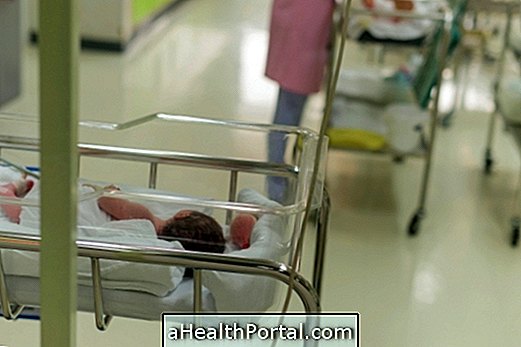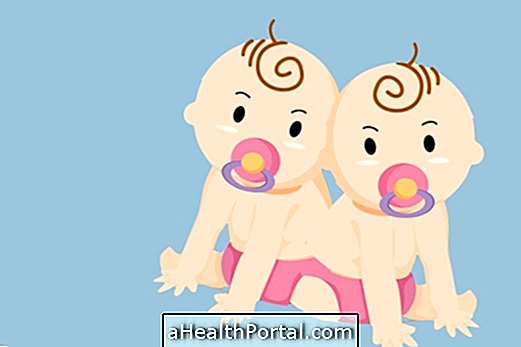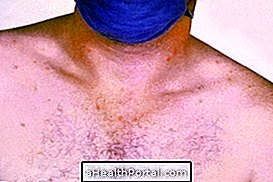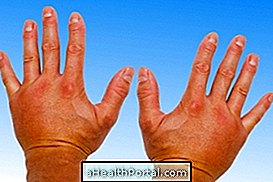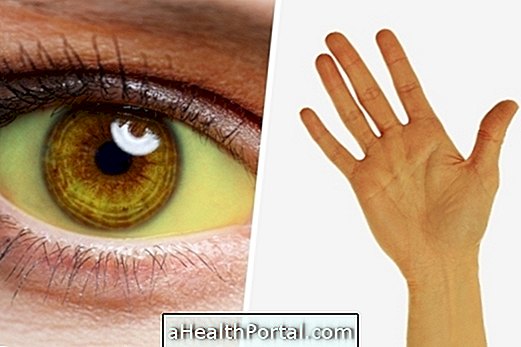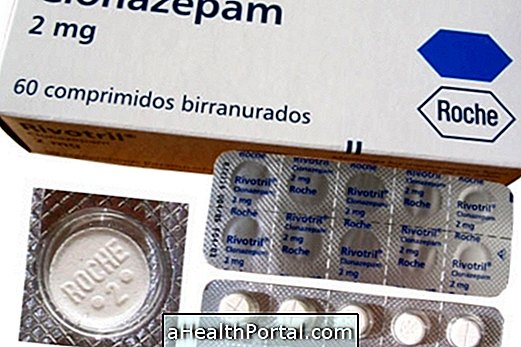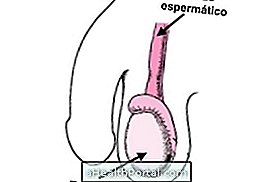Down syndrome, or trisomy 21, is a genetic disease caused by a mutation in chromosome 21 that causes the carrier not to have a pair, but a trio of chromosomes, and so in total does not have 46 chromosomes, but 47.
This change in chromosome 21 causes the child to be born with specific characteristics, such as lower ear implantation, pulling eyes upwards and large tongue, for example. Because Down syndrome is the result of a genetic mutation, it has no cure, and there is no specific treatment for it. However, some treatments such as physiotherapy, psychomotor stimulation and speech therapy are important to stimulate and assist in the development of children with trisomy 21.
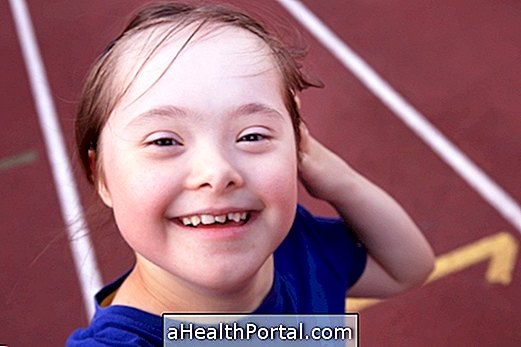
Causes of Down Syndrome
Down syndrome occurs due to a genetic mutation that causes an extra copy of a part of chromosome 21 to occur. This mutation is not hereditary, ie, it is a father to child and its onset may be associated with the age of the parents, but mainly from the mother, and there is a greater risk in women who became pregnant more than 35 years of age.
Characteristics of Down Syndrome
Some of the characteristics of people with Down syndrome include:
- Implantation of the ears lower than normal;
- Big and heavy language;
- Eyes slanted, pulled up;
- Delay in motor development;
- Muscle weakness;
- Presence of only 1 line in the palm of the hand;
- Mild or moderate mental retardation;
- Low stature
Not always the child with Down syndrome presents all these characteristics, and may also be overweight and retarded in language development. Get to know other characteristics of the person with this syndrome in Down Syndrome Symptoms.
It may also happen that some children have only one of these characteristics, not being considered in these cases, which are carriers of the disease.
How Down Syndrome Diagnosis Is
The diagnosis of this syndrome is usually made during pregnancy by conducting some tests such as:
- Ultrasonography;
- Nuchal translucency;
- Cordocentesis;
- Amniocentesis.

After birth, the diagnosis of the syndrome can be confirmed by performing a blood test. Learn more about how this disease is diagnosed in Down Syndrome Diagnosis.
In addition to Down's Syndrome, there is mosaic Down Syndrome, in which only a small percentage of the child's cells are affected, thus a mixture of normal cells and cells with the mutation in the child's body.
Treatment for Down Syndrome
Physiotherapy, psychomotor stimulation and Speech Therapy are essential to facilitate Speech and Feeding of Down Syndrome patients because they help improve the development and quality of life of the child.
Babies with this syndrome should be followed from birth and throughout life so that their health status can be regularly evaluated, because there are usually heart conditions related to the syndrome. In addition, it is also important to ensure that the child has a good social integration and study in special schools, although it is possible that she attends the regular school.
People with Down syndrome have a higher risk of having other diseases like:
- Heart problems;
- Respiratory disorders;
- Sleep apnea;
- Thyroid changes.
In addition, the child must present some type of learning difficulty, but not always have mental retardation and can develop, can study and even work, having a life expectancy of more than 40 years, but are usually dependent on care and need be accompanied by the cardiologist and endocrinologist throughout their lives.
How to avoid Down Syndrome
Down Syndrome is a genetic accident and therefore can not be avoided, however, getting pregnant before age 35 can be one of the ways to decrease the risk of having a baby with this syndrome.
Boys with Down syndrome are sterile and therefore can not have children, but girls can get pregnant normally and have a high chance of having children with Down syndrome.

